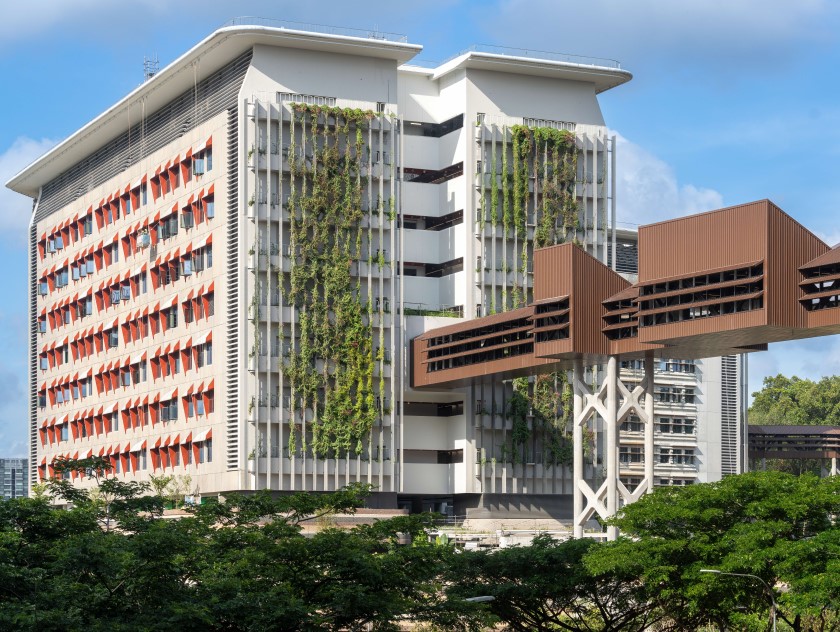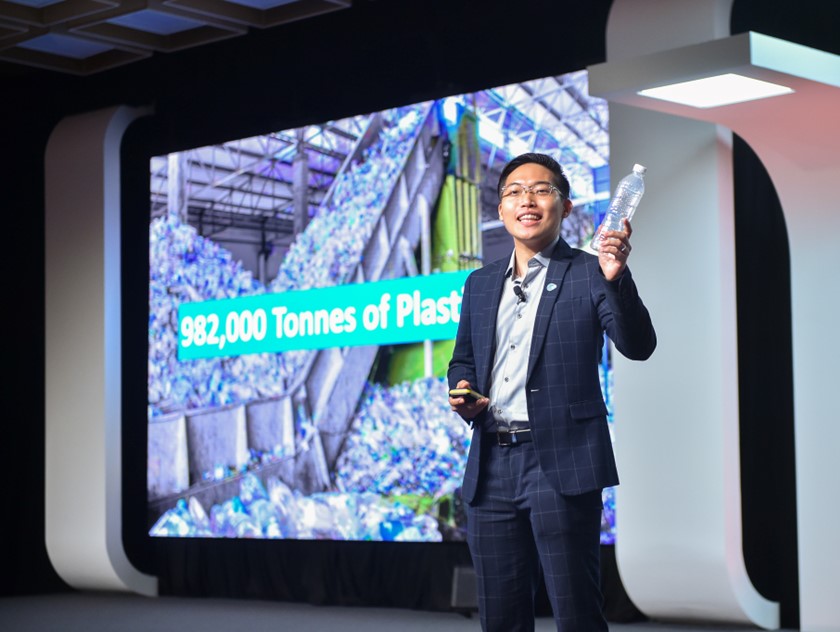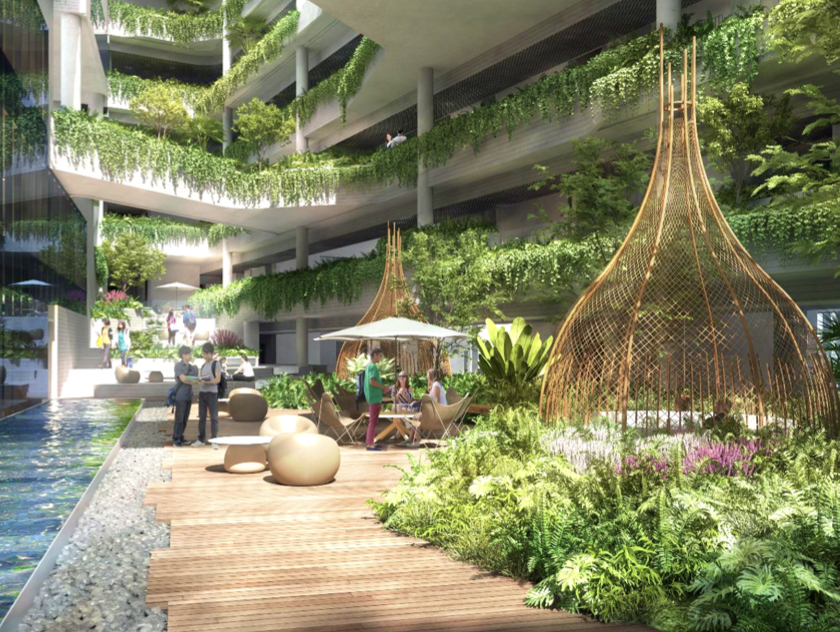Coral reefs have long held the wonder of marine biologists, diving enthusiasts and the like. Around the world, there is a concerted effort to replicate coral reefs in the hope that engineering and technology can play a complementary role in ecosystem conservation.
Singapore is also rising to the challenge. In 2018, JTC and National Parks Board (NParks), in partnership with local marine research and interest group communities, set out to create an artificial reef habitat at the 40-hectare Sisters’ Islands Marine Park. This project saw the construction of eight artificial reefs that would collectively contribute some 500m2 of additional reef area to the marine park. Occupying the entire water column from sub-surface to the seafloor, these structures are meant to stimulate reef development and recovery, double up as shelter for marine organisms as well as absorb wave energy.
JTC’s wealth of engineering expertise allowed it to contribute meaningfully to the project. “There are overlapping aspects between land and marine construction projects,” explains a key representative of the JTC team, Mr John Kiong. The deputy director of JTC’s Future of Building and Infrastructure Division adds: “Both require looking at foundation designs, ensuring the overall stability of the proposed structure, managing contractors, and obtaining clearances from the relevant authorities. We also harnessed our strength in project management, ensuring that timelines and milestones were kept to.”
So, what
does it take to build artificial reefs from scratch? Let’s dive into the
inspiration and engineering behind the project.
Selecting
A Prime Location for the Artificial Reef Structures
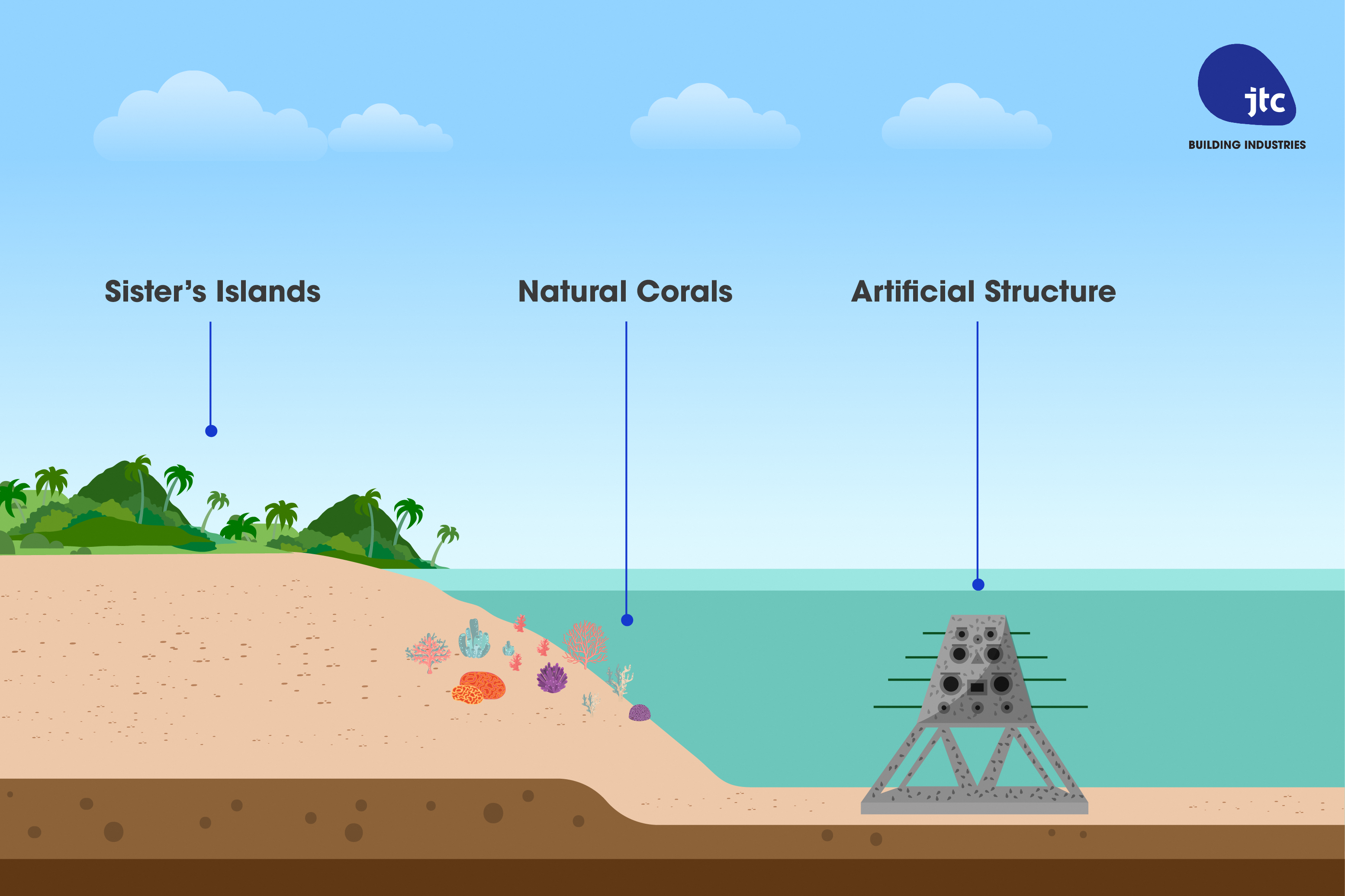
It took the team about three years of preliminary studies
and consultations before identifying Sisters’ Islands Marine Park as the ideal
location for the artificial reef habitat. The gazetted region teems with rich
marine biodiversity, from hawksbill turtles to anemonefish and kusu rock crabs.
The marine park stands at a pre-existing slope that is densely studded with healthy coral reefs. Adjacent to this slope is a flat and sandy seabed bare and free of anchorages. Additionally, it was not populated with any coral reefs or marine communities, so the submersion of any manmade structures would pose no disturbance.
“To explore the site’s geology, the team conducted underwater depth studies as well as soil investigations,” says Mr Kiong. “The results revealed that the seabed’s foundation was strong enough to withstand the weight of a massive structure. Hence, there was no need to perform marine piling. We also ran before-and-after hydraulic simulations and were pleased to find that the water flow remained unchanged with the submerging of the artificial reef.”
Artificial
Reef Design and Materials - A Multi-level Structure Aimed at Maximising
Sunlight Access
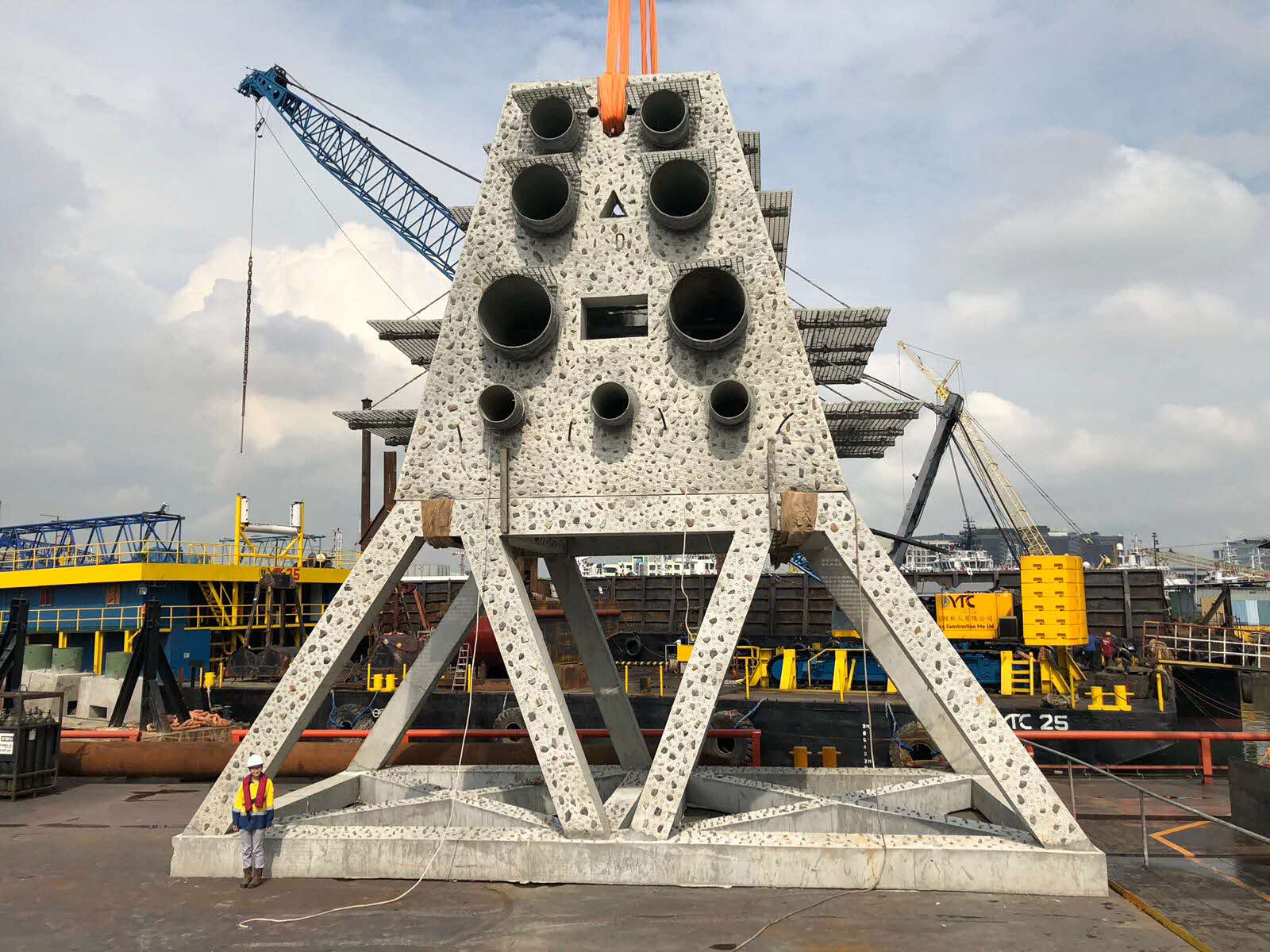
Coral reefs require sunlight to thrive. At Sisters’ Islands Marine Park, the waters
go deep, beyond the areas where natural coral reefs flourish and where sunlight
penetrates. Hence, the intent was to build structures that are tall enough to
host the corals closer to the water surface where sunlight penetrates. The
artificial reef structures were eventually designed to stand at seven to 11
metres tall.
The team favoured the idea of a slope replica instead of a vertical reef. With a multi-level configuration, the arrangement of the corals can be spread out, in turn making the most out of the varying amount of sunlight penetrating through the top six metres of water column. “Furthermore, as colonies grow, the reefs in the shallower region inevitably block out sunlight. A slope replica circumvents this problem,” says Mr Kiong.
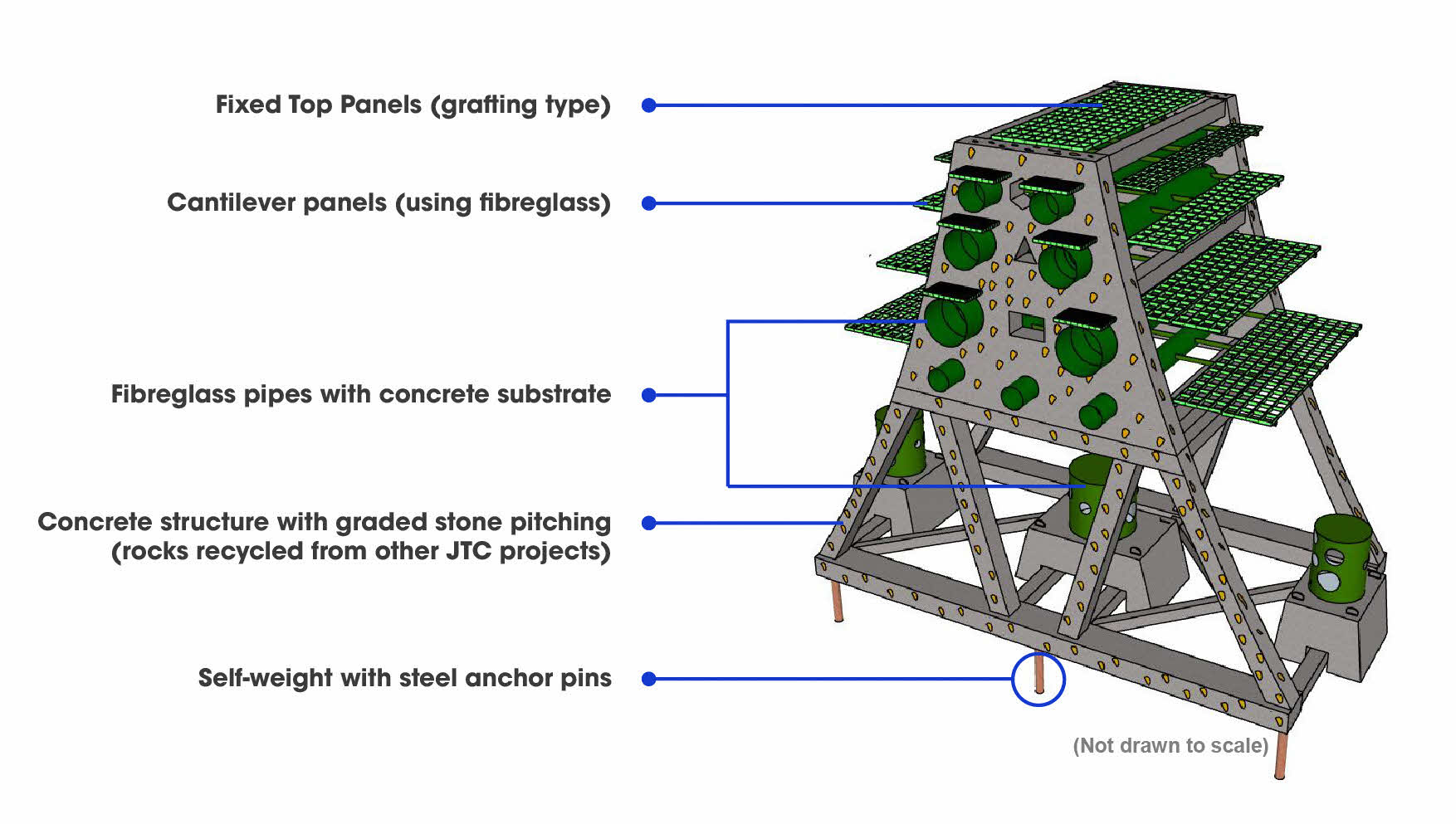
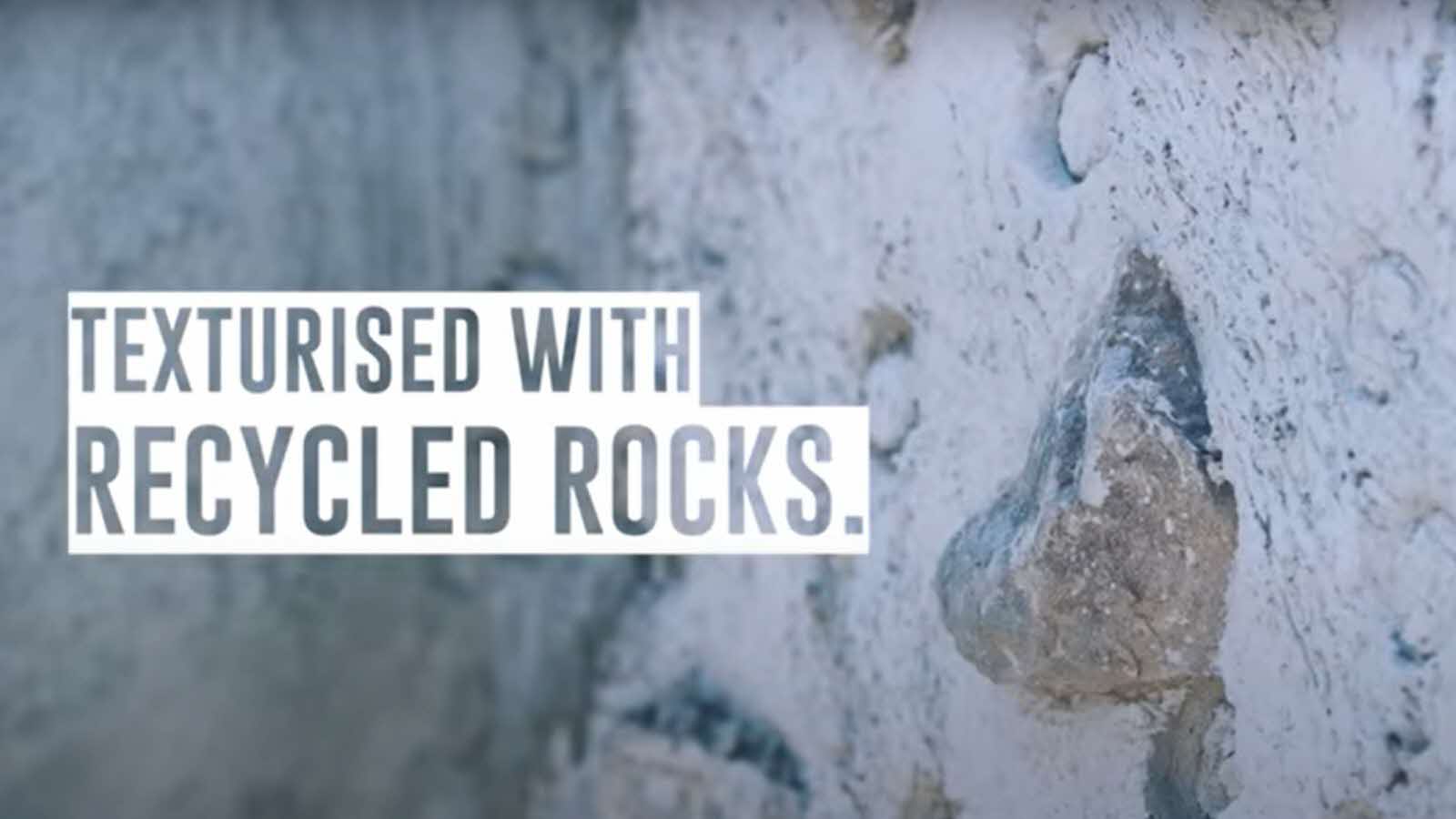
From material use to eventual
construction, JTC made many considerations in tandem with the appointed
contractor, taking advice also from NParks and community groups. PVC and
fibreglass were chosen to reduce the overall weight of the structure. They also
enhance biofilm formation, which encourages coral attachment. The main frame of
each structure was cast in concrete, an abundant source of calcium. Corals need
calcium, as they combine it with carbon to produce calcium carbonate, which is
used to construct an internal skeleton.
Each artifical reef is a composite of the following:
- Fibreglass panels: The team wanted to increase the surface area for coral growth and attachment. The upper section was thus fitted with rectilinear fibreglass panels. The mesh design provides the added advantage of limiting sunlight blockage while sediments can fall through the gaps.
- Fibreglass pipes: Just like how coral reefs provide shelter, these fibreglass pipes are meant to be homes for fishes, crustaceans, invertebrates and other species of marine life. Openings along the pipes allow water currents to flow through and light to penetrate. The curved surfaces also minimise sediment accumulation.
- Steel anchor pins: Since no piling works were executed, these steel anchor pins and counterweights help to hold the entire structure down in place.
Artificial Reef Placement – A Massive Job for Massive Structures
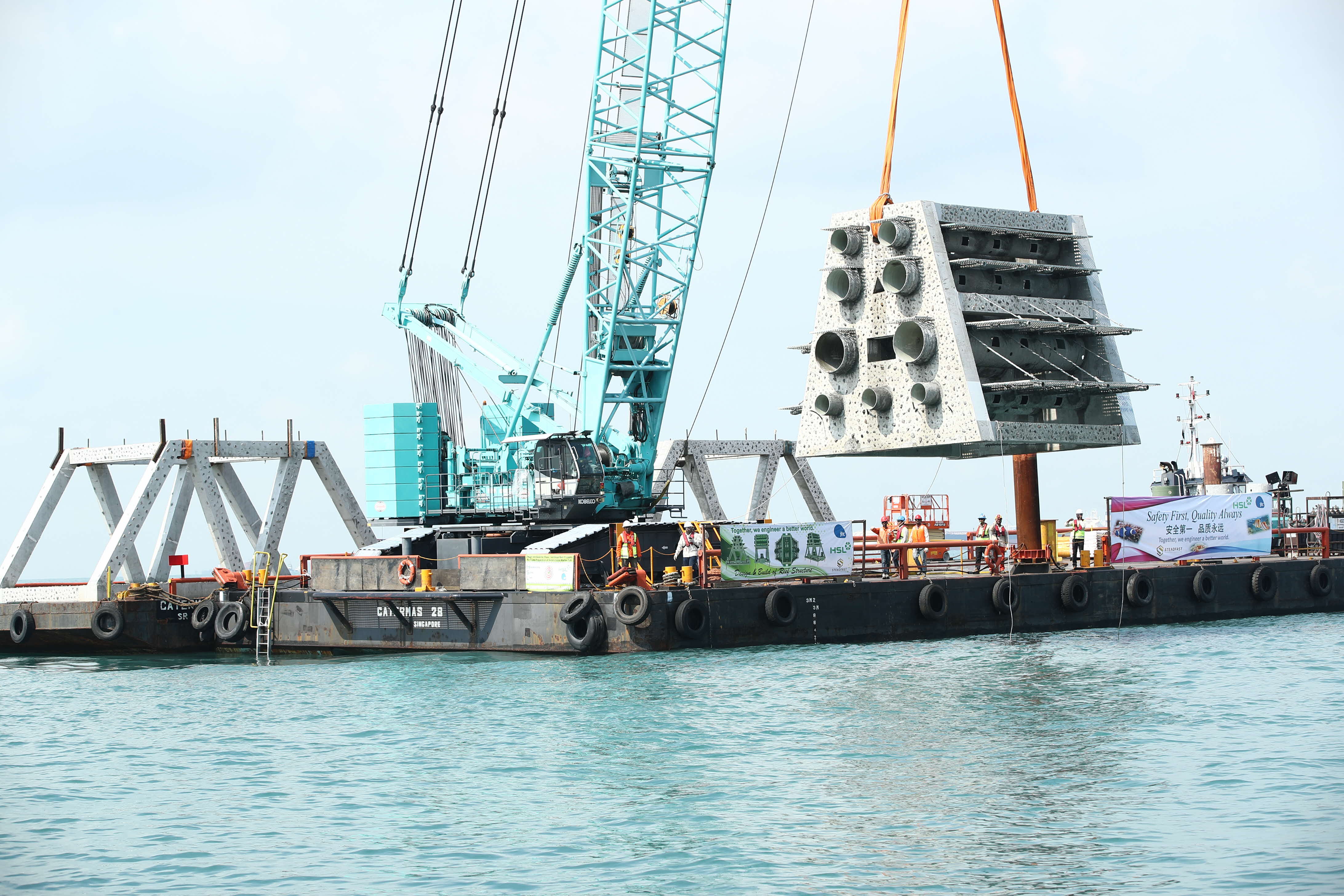
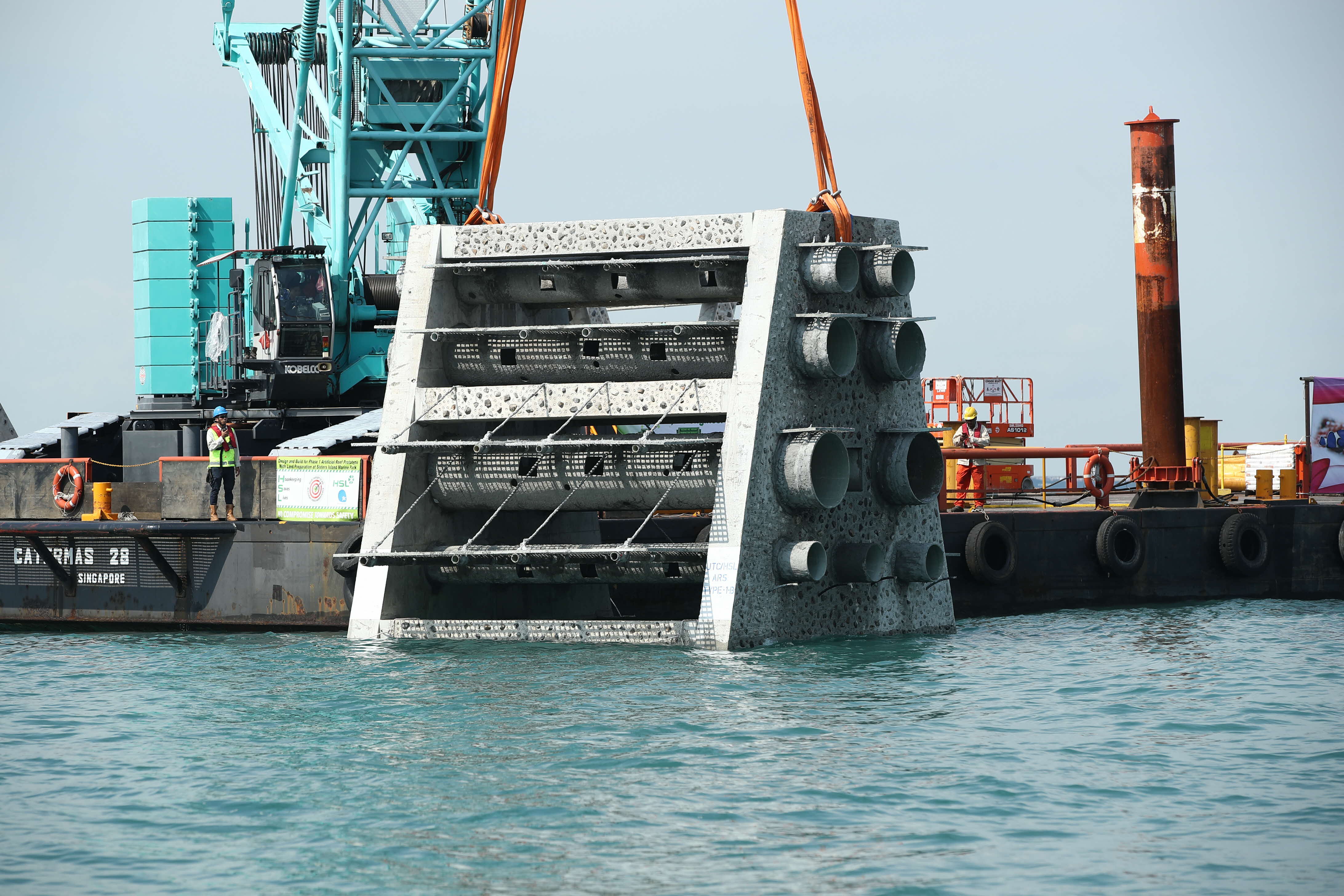
Taking about six months to conceptualise, design and
construct, the structures were prefabricated off-site and then sunk on to the
flat seabed adjacent to the pre-existing reef slope.
Due to its massive size, submerging each artificial reef structure was a two-part process, beginning first with the base, then the top half.
Four Years On — Signs of Life Blossoming on the Artificial Reefs
To kickstart and coax the reef colonisation process, the team embarked on a coral transplantation journey between September 2020 and February 2021. Some 1,933 healthy coral colonies from 43 genera were gathered from donor sites, and then anchored on to six structures using marine cement.
Two units were deliberately left untouched. “For these two, we wanted to let nature take its course. We call it ‘Day Zero’. Our marine researchers were very excited to be able to study the formation of coral reefs from the very beginning,” explains John.
Even more encouraging, Mr Kiong says, is seeing the growth of baby polyps on the two previously untouched structures. Since their deployment, coral colonies have settled on the structures. “This is a sign that our structures are on track to become vibrant coral reefs. And that sparks the cycle of life: when coral reefs grow, marine animals will come, thus strengthening the marine biodiversity of the islands. In fact, the artificial reefs are already attracting garoupa and lobsters.”
